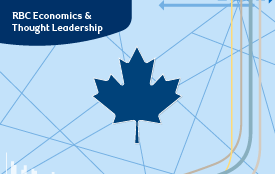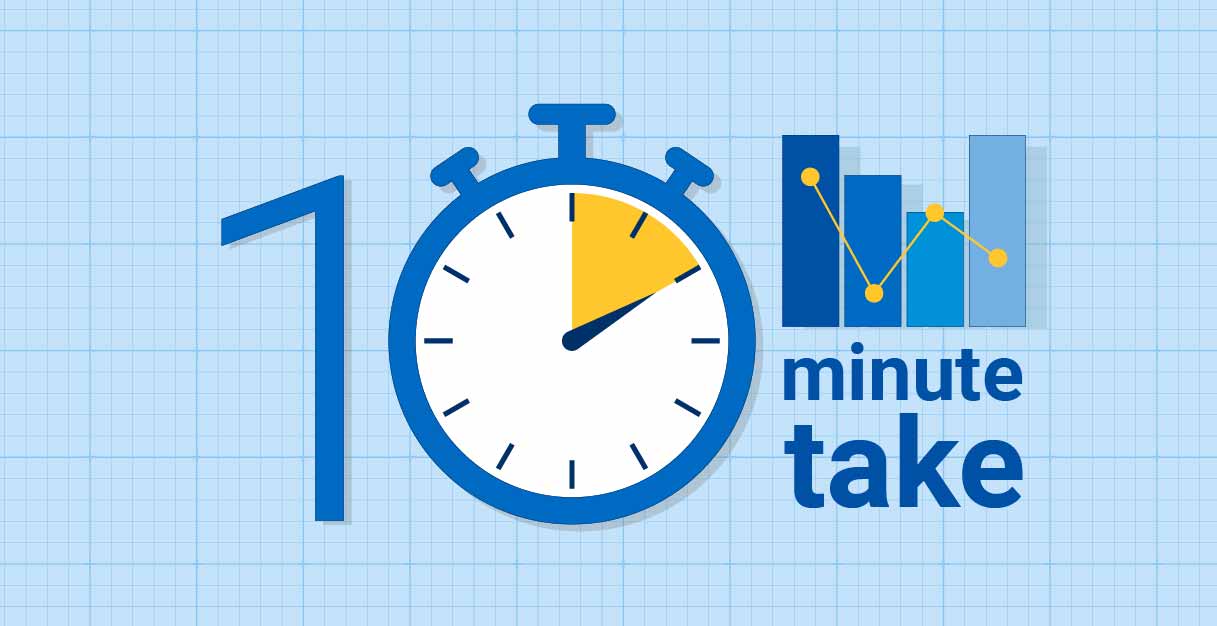And so, the post-pandemic era begins
The year 2024 will be the first fully post-pandemic year. The fog will start to lift, and we’ll get our first glimpse at the new normal. The pandemic has left a complex legacy. Cost of living has gone up tremendously, and even a return to 2% inflation by the first half of 2024 won’t fix that. The lagged effect of the highest inflation in 40 years and the most aggressive monetary tightening in nearly 30 years will keep economic growth sluggish in Canada. Expected interest rate cuts over the course of the year will only reduce the restraining effects of monetary policy. Slack will build in the labour market. The U.S. economy will flirt with a recession. And the outlook for both China and Europe is soft.
Geo-political tensions and flashpoints have halted or even reversed globalization’s march—we’re seeing trade flows centred more around geopolitical considerations than economics. Governments are focusing inward and building alliances.
And so, the post-pandemic era begins
The global economic order is reshaping and new blocs are emerging. Issues of the economy, affordability, and healthcare are ranking higher as priorities, bringing into question how climate action can be accelerated. These elements will make for a tense, potentially volatile business environment in 2024.
But 2024 could also be the year of repair and revival. With inflation coming off the boil, corporations and consumers could look to rebuild and capitalize on opportunities sparked by the turbulence of the past few years. The dollars pouring into clean tech and high tech could boost business sentiment, making 2024 a year of renewal.
Here are eight ways the year ahead will shape Canada and the global economy.

Consumers to embrace shrink-sumption
Making ends meet will continue to be a challenge for many Canadians. Lower-income households will feel particularly stressed, with high food and energy prices squeezing purchasing power. Rising debt service costs will take further budget room away from everyday consumption items—call it shrink-sumption. The savings cushion accumulated during the pandemic is unevenly distributed and will only protect those at the upper end of the income scale. And that cushion is increasingly unlikely to be spent as a softening job market erodes household confidence.
Amid growing financial stress—and distress—look for consumers to hunker down and push back on further price increases. Households will be on the defensive, tightly managing their budget. They will also look to grow their income to restore their purchasing power.
Consumers to embrace shrink-sumption
What we’re watching: softer demand for discretionary items, consumers altering spending habits, households looking for supplementary income, opportunities for low-cost providers, demand for higher wages, fewer job vacancies, rising debt delinquencies and consumer insolvencies
Indebted businesses to feel the squeeze
Businesses will face slower demand and pushback against price hikes while dealing with high operating costs: continued pressure for higher wages, costlier inputs, and growing decarbonization costs. Profit margins are poised to shrink after experiencing higher levels during the pandemic. And an overall tougher business environment could well lead to casualties – the rising trend in insolvencies is likely to continue.
Many small businesses face a looming deadline. Pandemic-era Canadian Emergency Business Account (CEBA) loans are coming due in January — 900,000 businesses accessed a total of $50 billion, and nearly 70% of businesses haven’t been able to repay them as of Sept. 2023. However, non-financial corporates enter 2024 in a generally strong position, with a cash stockpile during the pandemic averaging 30% relative to GDP, compared to over 24% in the two years prior to the health crisis.
The need to boost productivity will be greater than ever to help offset higher costs and soften the squeeze on profit margins. Companies will continue to explore ways to leverage technology, including generative AI.
Indebted businesses to feel the squeeze
What we’re watching: Businesses will have limited ability to pass on cost increases to customers, many will streamline their cost structures and look for efficiency gains, rethink the way they operate, and invest in productivity-enhancing equipment and software.
Exhausted coffers will leave little wiggle room for governments
The past three years have not been easy as Canadian federal and provincial governments took on $400 billion in debt to navigate the largest public health crisis in over a century. The massive spending that propped up citizens and businesses through the pandemic, but the bills are now coming back to roost. Significant financial outlays and debt increases have left little room for federal and provincial governments to manoeuvre fiscally.
Higher debt servicing costs will require federal and provincial governments to re-evaluate programs and chart a path to fiscal sustainability. Canada – and other sovereigns – will not get a free pass on pandemic spending and the risk of a downgrade should be monitored. Most fiscal health metrics have Canada in the middle of the pack among the handful of AAA-rated countries, but any significant economic slowdown or slippage in fiscal plans would be a cause for concern.
Exhausted coffers will leave little wiggle room for governments
What we’re watching: Government will need to be disciplined in their spending decisions amid rising costs, expenses, and debt; ensure strict fiscal anchors or guardrails are in place; Canada’s sovereign credit rating could be under the microscope.
Housing crisis will remain an intractable issue
If 2023 was the year that a supply-first consensus came together, 2024 will be about governments actioning their plans to address Canada’s housing supply gaps. Removing all sorts of obstacles in the way of new housing, speeding up approval and delivery will be the new mantra.
It’s a tall order and some factors will be hard to turn around quickly. Building the number (and types) of homes needed will take years and could be impeded by labour shortages in the skilled trades. Significant supply gaps will persist in 2024 as a booming population continues to drive up housing demand rapidly. Lower interest rates in the second half in 2024 will help improve affordability but not by much.
The extremely high bar to homeownership across many parts of the country will put rental options in the spotlight. We expect more rental supply coming to market in the year ahead in response to high rents and various incentives to prop up construction—including the GST (and in some provinces, PST) rebate. However, this increase is likely to come short. Soaring rental demand will maintain intense pressure on the rental stock, keeping vacancy rates low and rents high.
Housing crisis will remain an intractable issue
What we’re watching: Soft pre-construction sales, signs of new rental projects, affordability-related strains will persist, mobile Canadians will keep moving to more affordable regions of the country, newcomers face an even taller barrier to settling in Canada, demand for social housing will surge.
Climate policy—and climate-change—fights will escalate
If 2023 was the year climate clashed with energy security, in 2024 it’s expected to come up against economic realities. Still, as wildfires raged across Canada and wider North America, and the world endured its hottest year on record, calls for curbing global warming will only grow louder. COP28 saw countries pledge to triple renewable energy and nuclear capacity to help to eventually wean themselves off fossil fuels.
Canada also unveiled several climate policy proposals, such as the proposed Clean Electricity Regulations and oil and gas emissions cap, that have already raised tensions with Alberta and other provinces. Many of these fights could play out in 2024 and delay climate action, at a time when Canada has been the only G7 country to miss its emissions target. Elevated affordability concerns for consumers will likely keep policy on the defensive.
Climate policy—and climate-change—fights will escalate
Energy developers will also seek greater policy certainty and incentives before they allocate capital for carbon capture technologies, nuclear, solar and for a cleaner grid that will lay the ground for a new energy economy. Inflation and interest rates are also impacting clean projects in terms of costs, profitability, and overall attractiveness to investors. A major global renewable ramp up is colliding with economic realities, notably in U.S. offshore wind sector that has seen several high-profile cancellations due to poor economics.
On the consumer side, electric vehicle incentives will continue to drive sales through 2024 but are set to expire in early 2025. Barring fresh top-ups, Canada’s progress to achieving 20% of new vehicle sales by 2026 could be threatened.
Climate policy—and climate-change—fights will escalate
What we’re watching: Risk of climate policy regression given higher cost of living, federal-provincial tensions on carbon tax, carbon capture, utilization and storage, and emissions reduction regulations, EV sales, clean energy project development.
Indigenous groups will seek resource-led reconciliation
It will be a year of details when it comes to Indigenous matters in 2024. The Trans Mountain pipeline expansion is set to come online in 2024 and the federal government, its current owner, is seeking an Indigenous ownership stake. Several First Nations organizations have emerged as prospective buyers – eyeing anywhere from 30% to 100% ownership – but it remains to be seen how grievances, regarding land and environmental impact, still being brought forward by other Indigenous parties, will be resolved. The Coastal GasLink pipeline is built and will link Canadian shale basins to LNG Canada’s export terminal by mid-decade, and Indigenous collectives have signed an option to purchase a 10% ownership stake in the pipeline.
Federal budget 2024 will provide details on the newly announced National Loan Guarantee Program. Many Indigenous communities are pushing for a sector-agnostic program that gives them flexibility to invest in oil and gas if it aligns with their development or community goals. And settlement payments have ramped up in recent years – nearly $35 billion in payouts have been resolved since 2020 – with $3.4 billion still budgeted for payments over the next two years, meaning Indigenous communities will have additional capital to invest.
Indigenous groups will seek resource-led reconciliation
![]()
$23 billion
The amount awarded in an historic payout for Ottawa’s chronic underfunding of foster care and family services that will start flowing to Indigenous recipients in 2024.
What we’re watching: The year 2024 could see greater Indigenous involvement in Canada’s resource projects, and oil flowing from TMX in 2024 that could translate to significant revenue for Indigenous communities depending on ownership stakes; oil & gas project eligibility for the National Loan Guarantee Program; settlement money flowing in 2024
Countries will seek to forge new alliances, rekindle old ones
Geopolitics has replaced economics as the top consideration in trade policy. Relationships, alliances, and blocs are of increasing importance, with issues of security, technology transfers, and supply chain resilience front of mind.
Canada will have to navigate reshaping global allegiances and geostrategic blocs, but also mend strained relations with economic powerhouses India and China, which could prove challenging. India is central to Canada’s Indo-Pacific strategy with a steady rise in trade and investment, over the past decade, but recent diplomatic spats have cooled ties. India also remains a rich source for Canada’s post-secondary and immigration systems..
Canada’s efforts to leverage its technology and resource advantage could bear fruit in 2024. Allies are increasingly eyeing Canadian copper, cobalt, lithium and other green metal resources to move away from dependence on China’s renewable energy supply chains. Canada also has an enviable nuclear power pedigree that can be exported to other countries, while its lead in artificial intelligence could unleash a new technology wave in the country. There is also an opportunity for agriculture sector to step up and help tame global food inflation.
Countries will seek to forge new alliances, rekindle old ones
What we’re watching: Efforts to sooth strained relationships with India and China; clean tech and AI related investment flows in Canada; U.S. election effect on Canada-US relations
The year voters could trigger more volatility
In 2024, over 3.2 billion people in 40 countries representing over US$44 trillion in GDP will head to the polls, including India, Taiwan, Turkey, Mexico, and Indonesia. The European Parliament could also see a shakeup. However, the U.S. will hold the most consequential election from a Canadian perspective. A pivot from one party to another will impact global security, trade, and action on climate change. Political discord is already materially impacting U.S. congressional support for the Ukraine, while (possible Republican Party candidate) Donald Trump has signalled his desire to scrap President Biden’s marquee climate bill – the Inflation Reduction Act. The election’s outcome next November will also impact key policies for Canada, including trade and immigration.
Globally, too, it’s the year of the voter. With centrist political parties across the world on the decline, left of centre and right of centre political parties are offering stark views on how they plan to rule. The ballots of 2024 could change the global order once again.
The year voters could trigger more volatility
What we’re watching: Spillover risk or expansion of ongoing conflicts in Ukraine; the Middle East crisis, , probability of direct China-Taiwan military conflict remains very low but not immaterial, designing trade policy around geopolitics is expensive, a collateral and networked effect of elections and impact on policy across the globe. China slowing down
What else to watch…
-
 The Great Wall Around China: Beijing is looking inwards as it pursues a more defensive growth model amid slower population and economic activity, and political restrictions that have sapped business sentiment. China is the largest lender to emerging markets, but it’s already begun to rein in projects from its massive Belt and Road Initiative.
The Great Wall Around China: Beijing is looking inwards as it pursues a more defensive growth model amid slower population and economic activity, and political restrictions that have sapped business sentiment. China is the largest lender to emerging markets, but it’s already begun to rein in projects from its massive Belt and Road Initiative. -
 Emerging Markets In The Spotlight: Elsewhere, India, Saudi Arabia, and the UAE are leveraging their financial muscle. Expect them to boost investment into emerging markets as they look to gain political clout. G7 will also push for more influence in emerging markets, while the U.S. election will determine its foreign policy going forward.
Emerging Markets In The Spotlight: Elsewhere, India, Saudi Arabia, and the UAE are leveraging their financial muscle. Expect them to boost investment into emerging markets as they look to gain political clout. G7 will also push for more influence in emerging markets, while the U.S. election will determine its foreign policy going forward.
What else to watch…
-
 Rise Of The AI Machine: Businesses will look to embrace AI even as they remain wary. Watch for greater interoperability of large language models leading to more efficient and effective AI tools. Automation is a persistent fear, but more and more products and solutions are being made to enhance human productivity, not replace it –cutting out and reducing time-consuming and tedious tasks to free up workers for higher value work, offering tremendous opportunity for businesses.
Rise Of The AI Machine: Businesses will look to embrace AI even as they remain wary. Watch for greater interoperability of large language models leading to more efficient and effective AI tools. Automation is a persistent fear, but more and more products and solutions are being made to enhance human productivity, not replace it –cutting out and reducing time-consuming and tedious tasks to free up workers for higher value work, offering tremendous opportunity for businesses. -
 An Era Of Extreme Weather: Heat waves in 2024 could push the planet to overshoot 1.5 degrees for the first time, according to some forecasts. Greater risk of wildfires, extensive heat events, flooding, and loss of glaciers in 2024, following on from a series of natural disasters in Canada and elsewhere in 2023 , would raise calls for faster adaptation and mitigation to protect climate-vulnerable infrastructure. From human displacement to economic impact – costs of sudden and volatile weather episodes have risen in recent years, and could spike further if emissions continue to rise.
An Era Of Extreme Weather: Heat waves in 2024 could push the planet to overshoot 1.5 degrees for the first time, according to some forecasts. Greater risk of wildfires, extensive heat events, flooding, and loss of glaciers in 2024, following on from a series of natural disasters in Canada and elsewhere in 2023 , would raise calls for faster adaptation and mitigation to protect climate-vulnerable infrastructure. From human displacement to economic impact – costs of sudden and volatile weather episodes have risen in recent years, and could spike further if emissions continue to rise.
A year of potential turbulence… and opportunities
The world navigated a once-in-a-generation health shock that upended fiscal and monetary policy over the past few years. Now we’re navigating its aftershocks. The year ahead will see dozens of countries undergo their own political shakeup, that could determine how the world co-operates, or diverges, on the economy, climate, trade and security.
Amidst all this, 2024 could also be a time of repair and revival. The fight against inflation will enter its final stages. Central banks will look to pivot from their tightest policy in decades. These easing pressure points will present opportunities for corporations and consumers to position themselves to thrive in a complex new world.
Related Reading
For more, go to www.rbc.com/climate-action-institute.

Download the Report
Contributors:
Robert Hogue, Assistant Chief Economist
Ben Richardson, Research Associate
Yadullah Hussain, Managing Editor, RBC Climate Action Institute
Shiplu Talukder, Digital Publishing Specialist
This article is intended as general information only and is not to be relied upon as constituting legal, financial or other professional advice. The reader is solely liable for any use of the information contained in this document and Royal Bank of Canada (“RBC”) nor any of its affiliates nor any of their respective directors, officers, employees or agents shall be held responsible for any direct or indirect damages arising from the use of this document by the reader. A professional advisor should be consulted regarding your specific situation. Information presented is believed to be factual and up-to-date but we do not guarantee its accuracy and it should not be regarded as a complete analysis of the subjects discussed. All expressions of opinion reflect the judgment of the authors as of the date of publication and are subject to change. No endorsement of any third parties or their advice, opinions, information, products or services is expressly given or implied by Royal Bank of Canada or any of its affiliates. This document may contain forward-looking statements within the meaning of certain securities laws, which are subject to RBC’s caution regarding forward- looking statements. ESG (including climate) metrics, data and other information contained on this website are or may be based on assumptions, estimates and judgements. For cautionary statements relating to the information on this website, refer to the “Caution regarding forward-looking statements” and the “Important notice regarding this document” sections in our latest climate report or sustainability report, available at: https://www.rbc.com/community-social- impact/reporting-performance/index.html. Except as required by law, none of RBC nor any of its affiliates undertake to update any information in this document.





